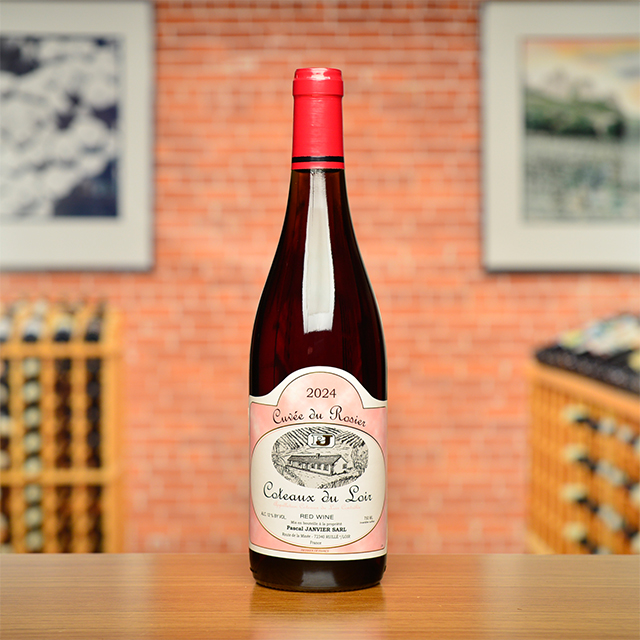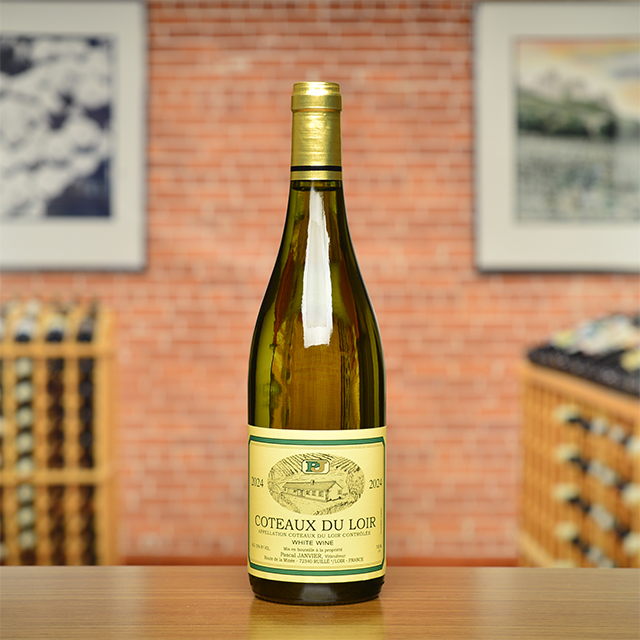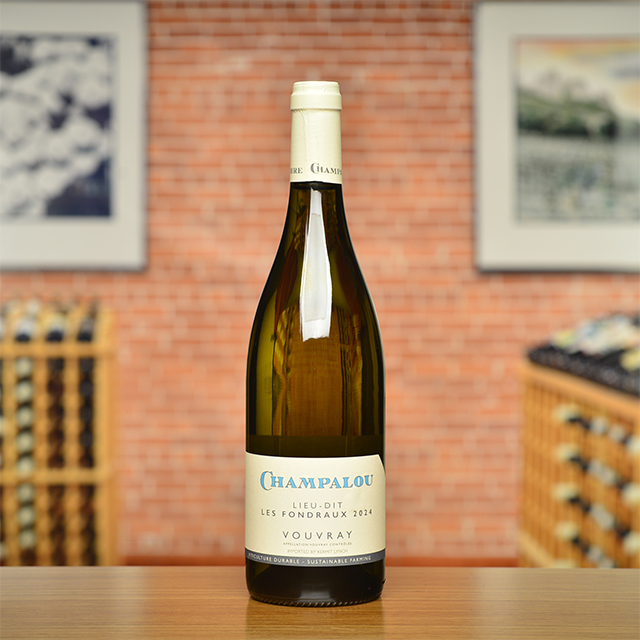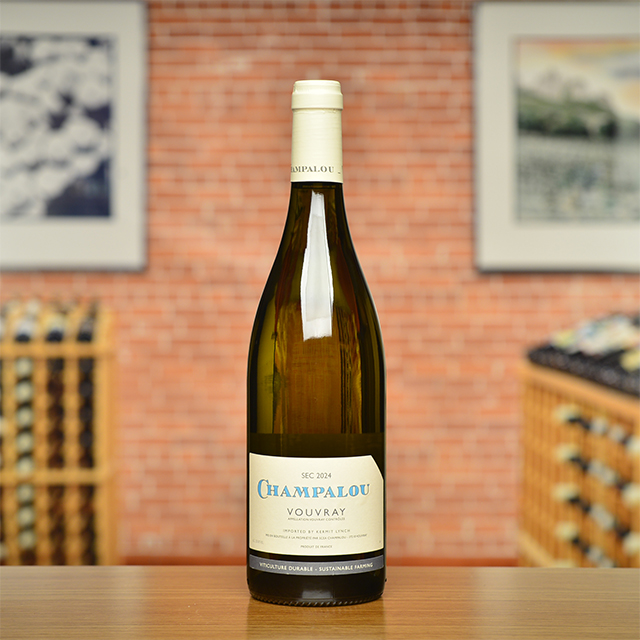Notify me
2018 Jasnières “Cuvée Sainte Narcisse”
Pascal Janvier
Do yourself a favor and give this gem a taste. It might be the most unusual, most delicious, and least expensive top-quality sweet wine you have ever tried. A pure Chenin Blanc, hand picked from a special selection of late-harvest grapes in the tiny appellation of Jasnières, this cuvée was made in miniscule quantities. It showcases an awesome combination of smooth, pure, decadent Chenin fruit and super-complex terroir—smoke, peat, exotic spices, and volcanic stoniness. Serve it as dessert, in and of itself, or as a palate-stimulating apéritif. We in the U.S. haven’t acquired the French habit of serving a sweet wine to start the evening, but it is worth a try. It works, especially with a knockout winner like this.
—Dixon Brooke
| Wine Type: | dessert |
| Vintage: | 2018 |
| Bottle Size: | 750mL |
| Blend: | Chenin Blanc |
| Appellation: | Jasnières |
| Country: | France |
| Region: | Loire |
| Producer: | Pascal Janvier |
| Vineyard: | 35-40 years |
| Soil: | Clay, Limestone |
| Farming: | Lutte Raisonnée |
| Alcohol: | 13% |
More from this Producer or Region

2020 Saumur Blanc “Clos Romans”
France | Loire
Thierry’s Saumur Blancs are bone-dry, high-acid, mineral Chenin Blancs that drink like Chablis young and take on weight slowly over time.

2020 Vin de France Rouge Cabernet Franc “Huguette”
France | Loire
Huguette is a silky, peppery Cabernet Franc from vines over a century in age.

2024 Coteaux du Loir Rouge “Cuvée du Rosier”
France | Loire
This red is 100% Pineau d’Aunis, an indigenous red grape we hold dear to our collective hearts because of its mystifying aromatics and bright, juicy texture.

2024 Jasnières
France | Loire
Racy, slightly honeyed, exotically perfumed, and loaded with minerality, this wine is an excellent representation of how Chenin reacts to the local conditions.

2024 Coteaux du Loir Blanc
France | Loire
October Club Gourmand ~ Exotically perfumed with hints of guava, musk, and clove, it finishes dry and quite flinty.

2024 Vouvray “Les Fondraux”
France | Loire
The contrast of ripe, succulent Chenin Blanc fruit with a spike of flinty minerality is like licking honey off an arrowhead.

2022 Jasnières “Cuvée Sainte Narcisse”
France | Loire
It might be the most unusual and most delicious top-quality sweet wine you have ever tried.

2024 Saumur Blanc “L’Insolite”
France | Loire
Made from nearly hundred-year-old vines, this a great initiation into the world of Thierry’s white wines.

2024 Vouvray
France | Loire
Gentle and refreshing on the palate, it boasts a delightful balance of stony minerality with luscious, almost honeyed fruit and flowery notes.

2024 Reuilly Pinot Gris Rosé
France | Loire
Citrusy aromatics, bracing salinity, and a mineral backbone make it a mouthwatering match for tangy, herb-laden soups like tom kha gai.
About The Producer
Pascal Janvier
About The Region
Loire

The defining feature of the Loire Valley, not surprisingly, is the Loire River. As the longest river in France, spanning more than 600 miles, this river connects seemingly disparate wine regions. Why else would Sancerre, with its Kimmeridgian limestone terroir be connected to Muscadet, an appellation that is 250 miles away?
Secondary in relevance to the historical, climatic, environmental, and cultural importance of the river are the wines and châteaux of the Jardin de la France. The kings and nobility of France built many hundreds of châteaux in the Loire but wine preceded the arrival of the noblesse and has since out-lived them as well.
Diversity abounds in the Loire. The aforementioned Kimmeridgian limestone of Sancerre is also found in Chablis. Chinon, Bourgueil, and Saumur boast the presence of tuffeau, a type of limestone unique to the Loire that has a yellowish tinge and a chalky texture. Savennières has schist, while Muscadet has volcanic, granite, and serpentinite based soils. In addition to geologic diversity, many, grape varieties are grown there too: Cabernet Franc, Chenin Blanc, Sauvignon Blanc, and Melon de Bourgogne are most prevalent, but (to name a few) Pinot Gris, Grolleau, Pinot Noir, Pineau d’Aunis, and Folle Blanche are also planted. These myriad of viticultural influences leads to the high quality production of every type of wine: red, white, rosé, sparkling, and dessert.
Like the Rhône and Provence, some of Kermit’s first imports came from the Loire, most notably the wines of Charles Joguet and Château d’Epiré—two producers who are featured in Kermit’s book Adventures on the Wine Route and with whom we still work today.
More from Loire or France
2021 Saumur-Champigny “Les Mémoires”
Thierry Germain France | Loire
2022 Sancerre Rouge “Champs d’Alligny”
Daniel Chotard France | Loire
2022 Muscadet Sèvre et Maine “Réserve”
Domaine Michel Brégeon France | Loire
2018 Saumur Blanc “L’Échelier”
Thierry Germain France | Loire
2022 Quincy “Château de Quincy”
Domaine Trotereau France | Loire
2020 Bourgueil “Les Perrières”
Catherine & Pierre Breton France | Loire
2024 Bourgueil “Cuvée Alouettes”
Domaine de la Chanteleuserie France | Loire
2020 Chinon “Clos du Chêne Vert”
Charles Joguet France | Loire
2022 Chinon “Le Domaine”
Bernard Baudry France | Loire
2023 Menetou-Salon Blanc “Cuvée des Bénédictins”
Prieuré de Saint Céols France | Loire
2024 Coteaux du Loir Blanc
Pascal Janvier France | Loire
2023 Sancerre Blanc “Pierre François Xavier Vieilles Vignes”
Domaine Roger Neveu France | Loire
2021 Saumur-Champigny “Les Mémoires”
Thierry Germain France | Loire
2022 Sancerre Rouge “Champs d’Alligny”
Daniel Chotard France | Loire
2022 Muscadet Sèvre et Maine “Réserve”
Domaine Michel Brégeon France | Loire
2018 Saumur Blanc “L’Échelier”
Thierry Germain France | Loire
2022 Quincy “Château de Quincy”
Domaine Trotereau France | Loire
2020 Bourgueil “Les Perrières”
Catherine & Pierre Breton France | Loire
2024 Bourgueil “Cuvée Alouettes”
Domaine de la Chanteleuserie France | Loire
2020 Chinon “Clos du Chêne Vert”
Charles Joguet France | Loire
2022 Chinon “Le Domaine”
Bernard Baudry France | Loire
2023 Menetou-Salon Blanc “Cuvée des Bénédictins”
Prieuré de Saint Céols France | Loire
2024 Coteaux du Loir Blanc
Pascal Janvier France | Loire
2023 Sancerre Blanc “Pierre François Xavier Vieilles Vignes”
Domaine Roger Neveu France | Loire
Kermit once said...

Kermit once said...
If you're looking for value, look where no one else is looking.
Inspiring Thirst, page 211
















